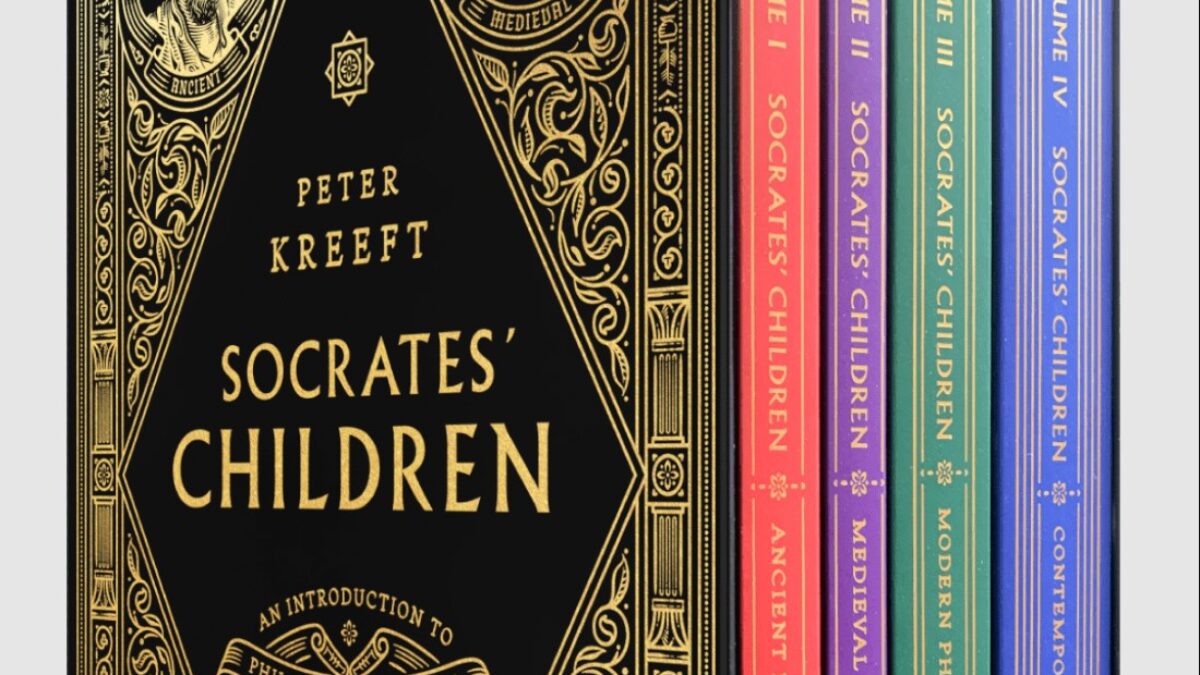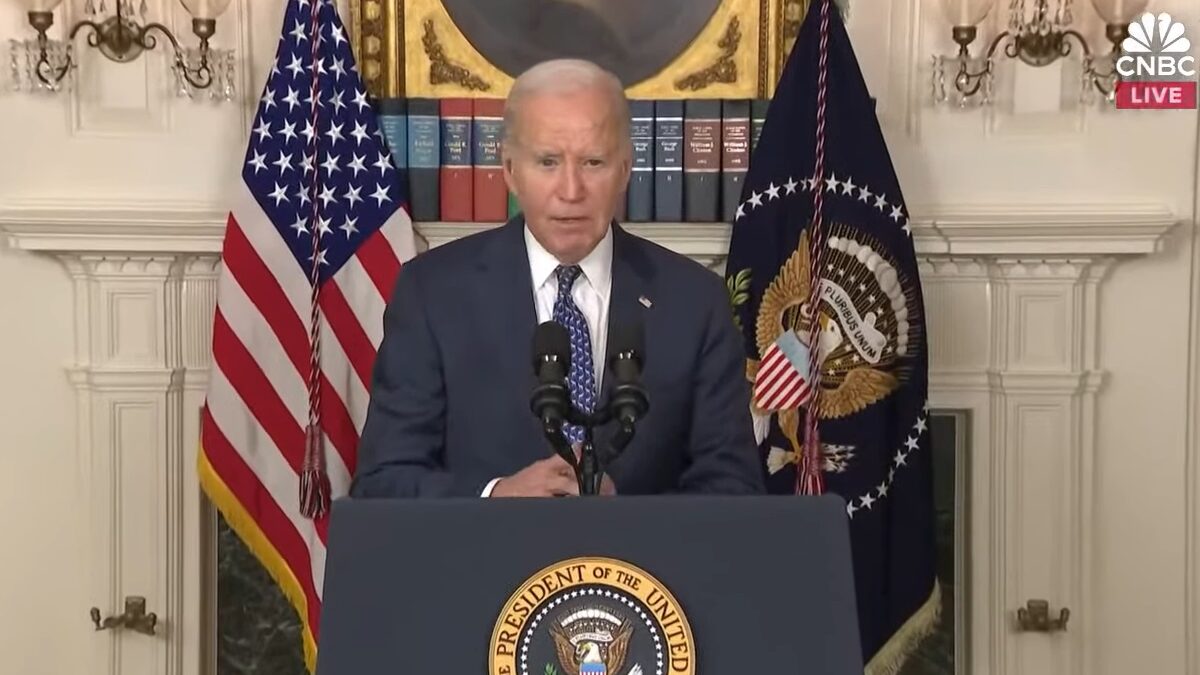
Liberty is something every American believes is his birthright. We’re the “land of the free”; our capital is the “capital of the free world.” Libertarians make the very idea of liberty central to their ideology, their tribe, their identity—it’s right in the name, after all. But what exactly liberty consists of is a hotly-debated subject. The lines of this debate tend to fall along the positive and negative liberty divide made popular by Isaiah Berlin, a well-worn groove I have no intention of wearing down again. Instead, I’d like to take a tour of three broad narratives: general moral stories that often get grouped together in discussions of liberty but in many ways conflict. They could go by many names, but for simplicity’s sake let’s call them the narratives of federalism, property, and liberation.
The narrative of federalism is the liberty of communities from central authorities. It is the liberty of Virginia to be different from California, but also the liberty of Fairfax, Virginia to be different from Roanoke, Virginia. It is the liberty of the Amish to operate under a local governance structure radically different from their neighbors. Federalism is at its heart a liberty of decentralization and variation, and for this reason libertarians have often embraced it as part of the larger narrative of liberty. But it has problems, which will become clearer when examined from the perspective of the other two narratives.
The narrative of property is the one most familiar to libertarians, and closest to their hearts. Unlike the previous narrative, this one is focused not on communities but on individuals. Communities have only a vague relationship to a property owner, if the thought of connecting the two occurs at all. If anything, the community is invoked as a vehicle of prejudices and interests which might be used to restrict the scope of ownership. Ownership itself is conceived purely as a right, often owing its origin to the ownership of one’s own body—although theories and stories of how property becomes legitimate are legion. For the most part, in its purest and most modern form, this right is not accompanied with a responsibility. If people have responsibilities, that’s conceived of as a totally separate story—a different branch of moral philosophy having nothing to do with the existence and sanctity of property rights.
If the narrative of property is the one libertarians tend to be the most comfortable with, the last one—the narrative of liberation—is the one that makes them the most uncomfortable. Like property, its focus is also on the individual. Unlike property, these stories cast community in a pivotal role—the role of oppressor, dead weight, or barrier. Under the liberation framework, individuals are liberated from something—superstition, prejudice, poverty, even from family ties or marriage. They are free not only to sell their property or form a community according to their own values, but to hold themselves to no one’s standards but their own. In practice, there are always specific standards either in the background or explicitly. Science is the great liberator of minds over religion and superstition. Policy provides just men an avenue for liberating the poor from their poverty. In law, liberation is embodied in anti-discrimination, affirmative action, and welfare of all stripes. Although libertarians are often intellectually hostile to this narrative and its policy prescriptions, they tend to be culturally much more at ease with its central stories than might be obvious at first glance.
Rivals Concerning Liberty and Pluralism
These three narratives present not only rival claims to the concept of liberty, but rival versions of pluralism. “Live and let live” to the federalist means letting members of each community, formed through free association, pursue their shared visions of the good however they please. To the propertarian, it means letting everyone buy or sell whatever he wants, hire and serve whomever he wants, and do what he wants with the property he has acquired. For the liberationist, it means letting individuals pursue self-realization and self-expression to the greatest degree possible, without allowing the constraints of community, ignorance, or scarcity to hold them back.
They are rival versions because while there may be many scenarios under which they do not conflict, there are many more under which they clearly do. Libertarians may find it surprising that the narratives of federalism and property might conflict, but allowing variation at the local and state levels means in practice allowing a wide variation in property laws and regulations. So counties in Texas have among the loosest land-use regulations in the country, counties in San Francisco the strictest, and many rural communities in Virginia have minimum plot sizes designed specifically to keep those communities rural rather than “developed.” All three arrangements conflict with the narrative of property, although Texas’s the least so. But none of them conflict with the narrative of federalism, because they are set at the local level.
The liberationists conflict most strongly with the federalists, because the federalists would be satisfied with more communities like the Amish springing up. But to the liberationist, the Amish are exactly what people need to be liberated from. They take their kids out of school as soon as legally allowed, and would undoubtedly do it sooner if they could. They push a single lifestyle, a single set of values, a single life track on their children from the day they are born. They do give them a chance to leave—but a committed federalist would be happy with versions of Amish communities that did not include the “Rumspringa.” Regardless, the liberationist sees it as nothing more than a sham, since young Amish are essentially blackmailed with effective alienation from everything and everyone they have ever known.
The propertarian tends to be neutral on the Amish, so long as their lifestyle isn’t subsidized and they don’t use intimidation or the law to take away the property of people who live among them but don’t share their values. However, the propertarian tends to be culturally closer to the liberationist in practice. When the liberationist faces the propertarian in public debate, they will pull out the laundry list—what about the southern businesses that would exclude African Americans? What about the country clubs that would exclude Jews? What about someone who is starving and homeless and in a perfect property-rights regime lacking welfare or charity; is he entitled to swipe something from the grocery store every now and then?
Federalism Is the Most Tolerant
When faced with such lists, the propertarian rarely bites the bullet and says, “Yes, some people will be excluded. There are some circumstances in which some people might fall through the cracks.” They make arguments about how Jim Crow was a government policy, and that in a truly competitive market people couldn’t afford to exclude certain groups because it would hurt their bottom line, and private charities have a long history, and so on. This is not to deny the legitimacy of such arguments—many have merit. But they demonstrate that the propertarian often shares a great deal of the values of the liberationist.
Of the three narratives, the liberationist’s is by far the least pluralist in the sense of actually accepting plurality. A plurality of individual choices are the focus, but in practice this means pushing for a single vision of education, welfare, and property restrictions across the widest possible area. Federalists, on the other hand, are the most pluralist; in their ideal world there’s a mix of large countries with diverse local governance solutions, and a huge number of very small countries with no “central” government in a meaningful, far-away sense at all. The propertarian is highly pluralist in how property may be used but highly monist in how property is envisioned.
Narratives of liberation and property thus are vulnerable to all the problems of monoculture—perhaps the one educational, regulatory, and welfare scheme, or the one vision of property, will turn out to be terrible, for some specification of “terrible.” The specification matters less than the idea that you are putting a lot of eggs into a single basket. The narratives of property and of federalism, on the other hand, face the conceptual difficulty of drawing any lines when actual propertarians and federalists (those with consciences) would probably want to. I know no one of either view who actually wants minorities to be denied services or employment, or who thinks a little genocide now and then is okay so long as it’s restricted to the local level.
I must emphasize that these are conceptual difficulties, not practical ones. Actual living institutional arrangements always fall far from perfection and have problems of their own. The questions I want to leave you with are theoretical: What resources do the narratives of liberation and property have to respond to a critique from monoculture, and what resources to the narratives of property and federalism have to respond to the critique of endorsing emergent injustice? Can these narratives be synthesized or must they always be in conflict?
This article originally appeared at Libertarianism.org, and is reprinted with permission.









